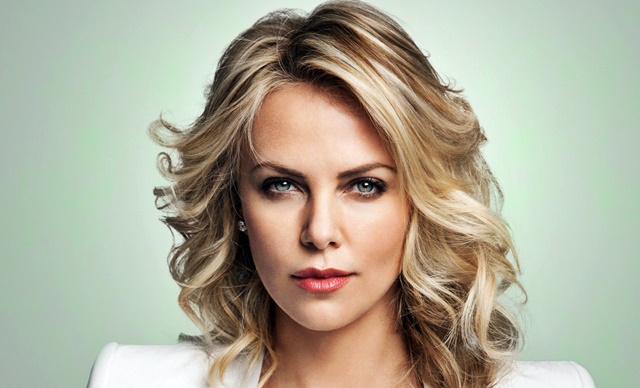
By Jae-Ha Kim
Chicago Sun-Times
January 13, 2004
With her sallow complexion, sagging jowls and bloated body, the woman onscreen in “Monster” isn’t recognizable as Charlize Theron.
Best known for her killer legs and babydoll face, the 28-year-old actress was an unlikely candidate to portray real-life serial killer Aileen Wournos. But when you look at side-by-side photos of the two, the likeness is uncanny.
It used to be that an actress’ marketing strength was her beauty. But these days, more actresses are pulling a De Niro and ramping up their street cred by doing whatever it takes to prove their looks are incidental to their talent.
“[Changing yourself physically for a role is] probably more dangerous for a woman’s acting career than for a man’s,” says sociologist Michael Kimmel, who authored The Gendered Society. “For women, the transformation has to be really extreme — to make her unrecognizable as Charlize.
“If the woman Theron was playing could be beautiful but weighed 175 pounds, then we’d walk out of the theater saying, ‘My goodness, she has put on weight.’ That smaller transformation in which she was still recognizable might hurt her career more than a total transformation.”
This may be one reason why actresses such as Renee Zellweger, who gained 20 pounds for “Bridget Jones’s Diary” and its sequel, are so quick to drop the weight once filming is over.
When makeup artist Toni G. met with “Monster” filmmaker Patty Jenkins and Theron, she was pleasantly surprised they wanted Theron to gain weight for the role, rather than wear a fat suit like Gwyneth Paltrow and Julia Roberts did in “Shallow Hal” and “America’s Sweethearts,” respectively. Part of the reason was to lend authenticity, but the other was monetary. The film didn’t have the budget for expensive prosthetics.
So the 5-foot 10-inch, 135-pound actress gained 25 pounds to flesh out the role. Granted, 160 is hardly overweight for someone that tall in the real world. But in Hollywood, it’s considered obese.
Unlike some actors Toni G. has worked with who said they wanted to be “real” but squirmed when they weren’t made quite attractive enough, Theron never complained.
“The key factor for capturing the look was Charlize gave 200 percent,” says Toni G. “We didn’t glue any prosthetic pieces on her. Every color we used was for the most part a translucent color wash. Instead of trying to hide blemishes, I had the opposite problem of creating flaws on her face. I added capillaries and freckles. But you can’t get jowls like she did without gaining weight, and she did it without complaining.”
The one thing Theron couldn’t make less attractive herself was her perfectly straight set of white teeth. So Art Sakamoto was hired to create prosthetic teeth to duplicate Wournos’ imperfect bite.
The “Monster” shoot lasted 28 days. When Theron’s weight began to dip a bit, she was encouraged to indulge in her favorite snack — potato chips.
Unfortunately, after the film wrapped, Theron didn’t have the luxury of losing the weight at a leisurely pace. She had about a month in between the final day of shooting “Monster” and the first day she was needed on set for “Head in the Clouds.” Weight loss experts recommend losing one to two pounds a week. Theron lost about six pounds weekly.
“Rapid weight loss is usually done by significantly cutting calories and the body responds to it differently than slowly losing weight,” says Dr. Robert Kushner, medical director of the Wellness Institute at Northwestern Memorial Hospital. “You don’t just lose body fat, but also muscle and protein. There’s the risk of dehydration as well as the loss of minerals such as potassium and sodium.
“I’m assuming [Theron] was healthy to begin with. If a person’s livelihood depended on her ability to gain and lose weight for her next job, I would guide them to gain weight not with sugary sodas and snacks, but with extra calories that were well balanced with protein and vitamins. I would try to guide them to lose weight through moderation in caloric reduction and exercise. But if they had a genetic predisposition to diabetes or other diseases, I would encourage them to skip a role rather than risk their health, which would affect them for the rest of their lives.”
When Matt Damon filmed “Courage Under Fire,” the already slender actor went on a self-imposed crash diet to lose 40 pounds to play a gaunt, heroin-addicted soldier. That kind of unsupervised weight loss can lead to kidney, liver and/or gall bladder disease, and the actor admits that in retrospect he did a very stupid thing. So when Damon needed to lose 20 pounds to star in “The Talented Mr. Ripley,” he did it with medical guidance.”
“If I had to do it all over again, I wouldn’t lose weight the way I did,” he says. “I didn’t know what I was doing. If I had to lose or gain weight again, I would hire a professional to show me the safe way to do it because just not eating is not the way to go.”
Whether Theron would’ve been just as convincing in this role wearing a padded fat suit and prosthetics is debatable. But it’s a fact she has garnered the best reviews of her career for this role.
“[Theron] is awfully beautiful and will remain so after [‘Monster’] opens,” says Chuck Kleinhans, a film expert at Northwestern University. “[Deglamorizing herself] won’t have any effect on her career or reputation, except to give her ‘street credibility’ as an actor who, like De Niro, would make an extra effort to be excellent in a role. In short, she’s saying ‘I’m a professional actor, not just a pretty babe.'”
Long tradition of actresses going from pretty to pretty ugly
Charlize Theron isn’t the first actress to ugly herself up for a role. Bette Davis and Joan Crawford did it for “What Ever Happened to Baby Jane?” Farrah Fawcett looked anything but angelic in “The Burning Bed.” And even Ann-Margret managed to look less than desirable in “Who Will Love My Children?”
In the last 10 years, a slew of glamorpusses made the effort to show the world they’re more than just pretty faces:
Halle Berry; “Losing Isaiah” (1995):
Yes, she looked downtrodden in her Oscar-winning turn in “Monster’s Ball” (2001) and she looked ridiculous in “B.A.P.S.” (1997). But it was her role as a druggie mom that showed Berry not only had acting chops, but the guts to look her worst.
Demi Moore; “G.I. Jane” (1997):
The movie was a critical flop, but Moore looked fierce as a Navy SEALS trainee. Bald, ripped and more than capable of completing one-armed pushups, she barely resembled the waifish reporter she played on “General Hospital.”
Nicole Kidman; “The Hours” (2002):
Besides learning to write right-handed to portray Virginia Woolf, this southpaw was barely recognizable with her plain Jane wardrobe and prosthetic nose.
Minnie Driver; “Circle of Friends” (1995):
The 5-foot-10-inch beauty gained weight to portray a homely Irish girl in love with Chris O’Donnell. She quickly followed that role up with a cameo in a Bond film to show she actually had a kickin’ figure.
Toni Collette; “Muriel’s Wedding” (1994):
With the help of a dietitian, Collette gained 40 pounds in less than two months to play the ABBA-obsessed fat girl who finds happiness. The filmmakers embellished her weight gain with padding to make her look even heavier during the early parts of filming.
Renee Zellweger; “Bridget Jones’s Diary” (2001):
After gaining 20 pounds to play the chubby lead, the petite actress swore she’d never gain that much weight again. But money talks. The actress did it again to shoot the upcoming sequel to the romantic comedy.





